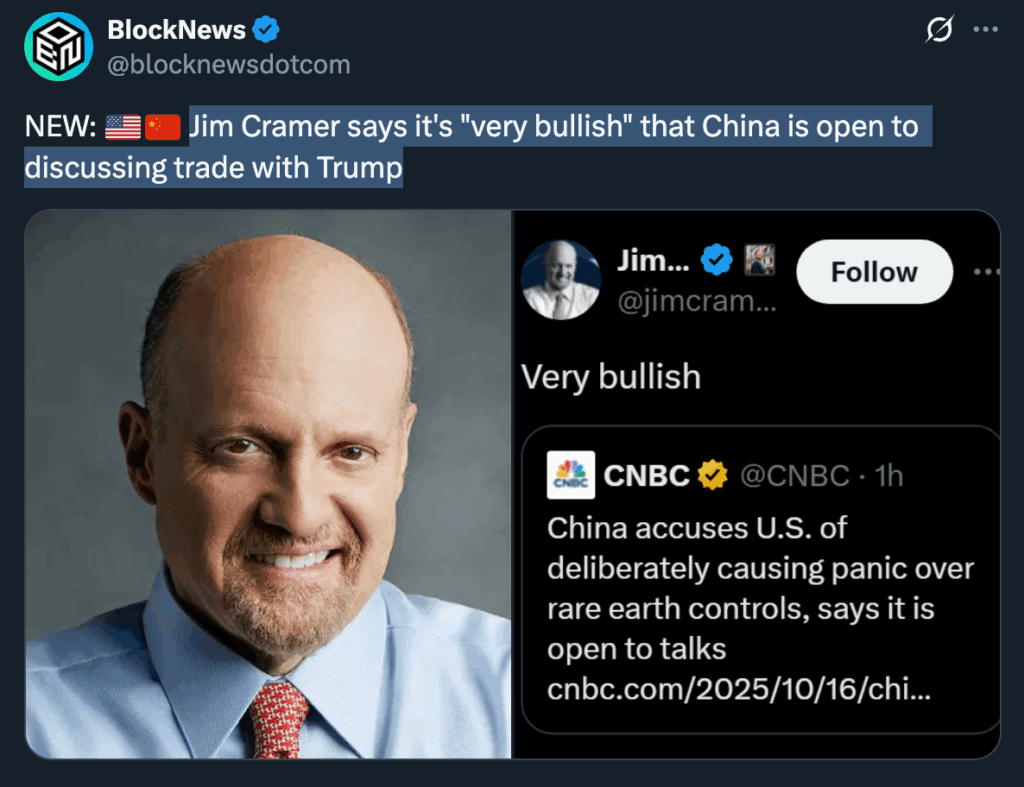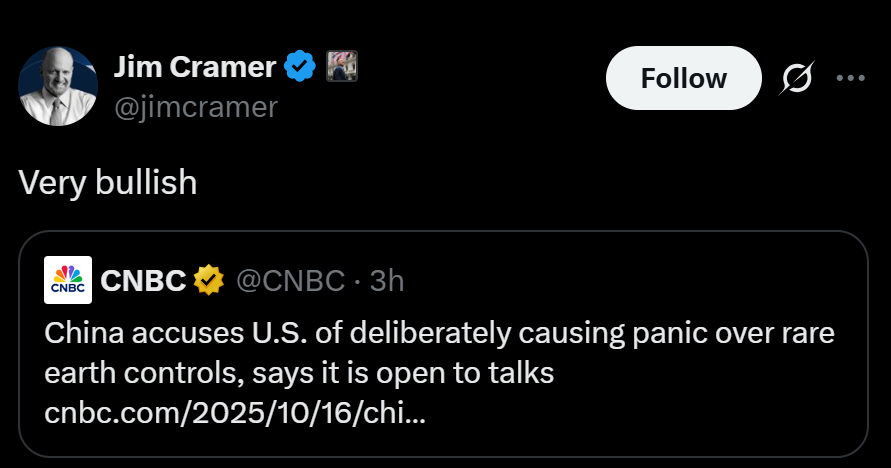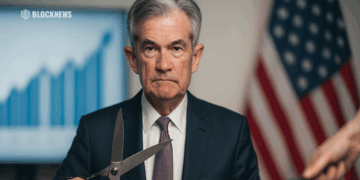- Cramer perceives China’s openness to trade talks with Trump as a signal that tensions might ease and markets could rally.
- The shift in tone from both Beijing and Washington helps reduce risk premiums tied to a full-blown trade war.
- But underlying structural issues—tech decoupling, export controls—remain obstacles to a lasting détente.
When Jim Cramer labels a development “very bullish,” he’s suggesting that markets may have room to run higher on renewed optimism. In this case, China’s apparent openness to trade negotiations with President Trump is read as a signal that both sides are ready to de-escalate. That softening could remove a key overhang on investor sentiment and restore more confidence in risk assets.

Market Relief, But Not a Cure-All
The market has already responded favorably to calmer rhetoric. After weeks of volatility sparked by China’s rare earth export controls and Trump’s threat of 100% tariffs, stocks rallied when both sides hinted at diplomacy. Yet this rebound is fragile. Optimism about talks can be dashed quickly by new provocations or unmet expectations.
Structural Frictions Remain
Even if trade negotiations resume, the deeper causes of U.S.,China friction won’t disappear overnight. Technology export controls, national security concerns, supply chain decoupling—all these remain in play. China may be ready to talk, but perhaps only on limited terms or under strict conditions. Until those lines are addressed, any “bullish” moment risks being fleeting.

Bottom line
Cramer’s call that China’s openness to trade talks is “very bullish” reflects a positive shift in market sentiment. But it’s not a guarantee of full resolution…just a potentially helpful pause in escalation.














